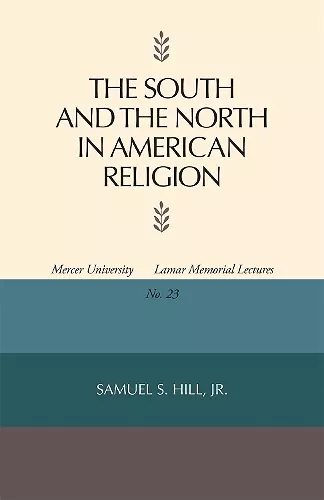The South and the North in American Religion
Format:Paperback
Publisher:University of Georgia Press
Published:1st Dec '07
Should be back in stock very soon

In this comparative history of religious life in the South and the North, Samuel Hill considers the religions of America from a unique angle. Tracing the religious history of both areas, this study dramatically shows how a common religion was altered by hostilities and then continued to develop as separate entities until recently. Coming almost full circle, both North and South now find their religions again to be highly similar. Two factors, Hill believes, were major influences in the diversification of the regional religions: the presence of Afro-Americans as an underclass of people with a distinctive role to play in the development of southern religious life, and the presence or absence of a large immigrant population.
Hill's overall purpose is to answer the questions: How did there come to be a South (without which there would not have been a North)? Why is the South the heartland of Evangelical Protestantism and a kind of "Bible belt"? What historical developments dispatched the two regions on distinctive courses, religiously and otherwise? How much interaction has there been between the religious institutions of the two regions? How similar and divergent have the cultural patterns, styles, and values been in "the South" and "the North"?
[A] pithy analysis of selected periods in American religious history from a southern perspective . . . The volume is illuminating in its succinctness and up-to-date in its use of secondary material.
Hill's thoughtful analysis is filled with good sense and advances the scholarly discussion. This brief book also would make a fine supplementary assignment for upper-level courses in American history.
No one in the past two decades has read or thought more about southern religion than Sam Hill; this little book is the clearest statement of what he thinks about it.
No short review can represent fairly Hill's complex and provocative arguments, nor can it pose significant alternative interpretations. His awesome sweep of interest, his immense learning, his cogency are invigorating, and somewhat intimidating.
A stimulating and useful study that unites sectional and religious history.
Hill's book merits careful reading by Southern historians. For readers who are prepared to examine it carefully, it will provide fresh insights into Southern religion and provoke new questions which deserve scholarly exploration.
ISBN: 9780820331317
Dimensions: 216mm x 140mm x 10mm
Weight: 454g
168 pages